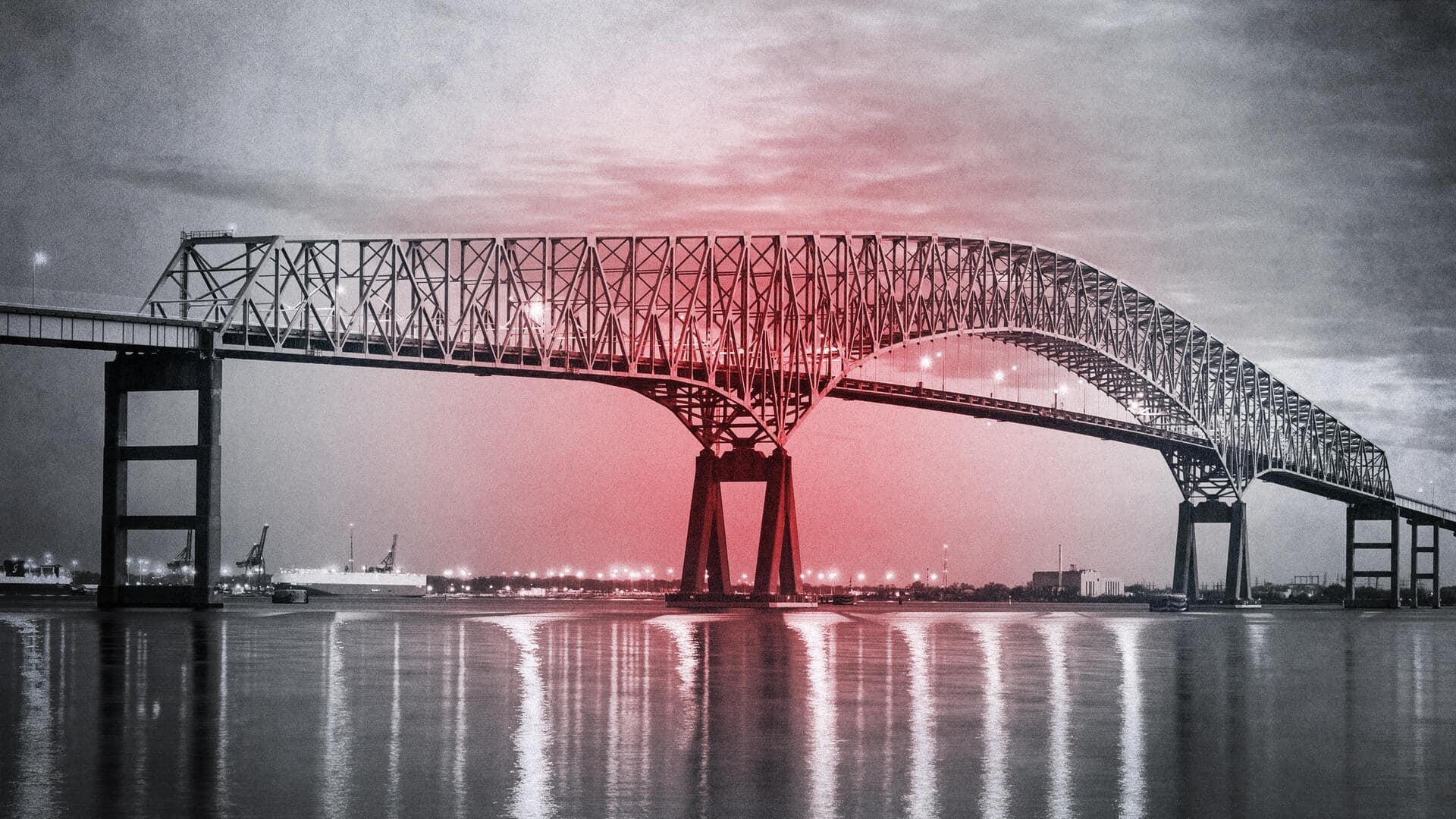
Baltimore bridge collapses after ship collision
What's the story
A significant portion of Francis Scott Key Bridge in Baltimore, United States collapsed in the early hours of Tuesday morning after a large container ship collided with it.
The incident—which occurred around 1:30am local time—has been classified as a "mass-casualty incident" by the Baltimore City Fire Department.
Reports indicate that several vehicles plunged into the river during the collapse, and rescue operations are currently in progress for at least seven people believed to still be in the water.
Baltimore Fire Department's statement
Emergency response and traffic disruptions following the incident
Kevin Cartwright, director of communications for the Baltimore Fire Department, confirmed that they received several 911 calls about the incident.
"This is...a mass casualty incident...we are searching for seven people who are in the river," he said.
In response to this catastrophe, all lanes on both directions of I-695 Key Bridge have been shut down by the Maryland Transportation Authority, leading to significant traffic disruptions.
Motorists have been advised that detours are in place due to ongoing rescue operations.
Twitter Post
Visuals from the accident site
Insane pictures!
— Sneha Mordani (@snehamordani) March 26, 2024
Collapse of the Francis Scott Key Bridge in Baltimore after it was struck by a container ship pic.twitter.com/K6598VRd2A
Statements
No casualties reported so far
After the incident, Baltimore Mayor Brandon Scott said, "I'm...enroute to...the Key Bridge... Emergency personnel are on scene, and efforts are underway."
Baltimore County Executive, Johnny Olszewski Jr, said in an X post, "I am aware of the situation at the Key Bridge and remain in regular communication with... Fire Chief...Director of Emergency Operations...the Mayor... Rescue efforts are underway. Please pray for those impacted."
As of now, there are no reports of casualties in connection with the Baltimore bridge collapse.
History
Historical significance and impact of Key Bridge
Built in 1977 at an expense of $60.3 million, the Francis Scott Key Bridge serves as a vital link between Georgetown in Washington DC and Rosslyn in Arlington, Virginia.
It was named after Francis Scott Key, who penned "The Star-Spangled Banner."
The bridge is of historical importance as it is located near the site where Key observed the bombardment of Fort McHenry in 1814, an event that inspired him to write the American national anthem.